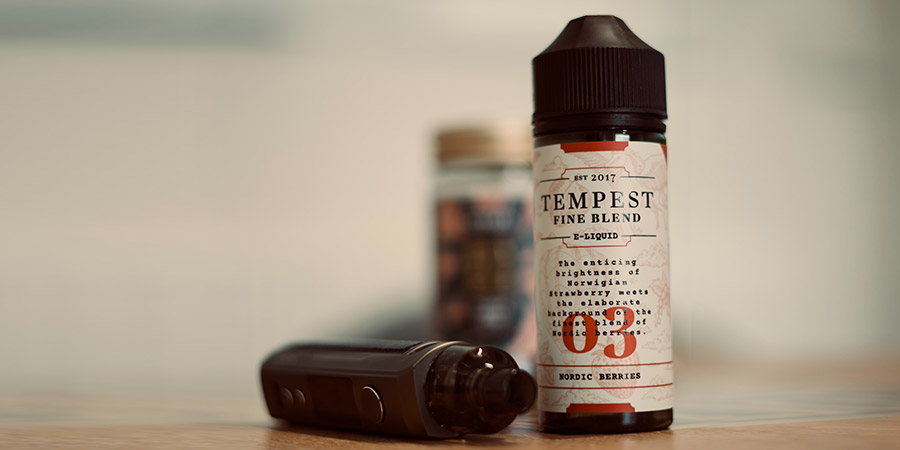
Vaping has emerged as a popular practice that’s often presented as an alternative to traditional smoking. It involves the inhalation of vapor produced by an electronic device which is commonly known as an e-cigarette.
This vapor usually contains nicotine, flavorings, and other additives. Unlike smoking, the process is deemed a cleaner delivery system as it does not involve the combustion of tobacco leaves. For enthusiasts, exploring a myriad of flavor options in e-liquids has become an integral aspect of the vaping experience, offering a customizable and diverse range of tastes.
In this article, we’re going to delve into the biomolecular aspects of vaping and highlight the technology and substances involved in this phenomenon.
Understanding Vaping Devices
At the core of a vaping device is the technology that allows the liquid solution, often referred to as e-juice or e-liquid, to be heated into an aerosol that users inhale. The main components of these devices are a battery, a heating element, and a cartridge or tank to hold the liquid.
When you take a puff, the battery powers the heating element, which warms the liquid until it becomes a vapor.
Composition of E-Liquids
E-liquids are concoctions made from a few basic biomolecular components. The primary ingredients are propylene glycol (PG) and vegetable glycerin (VG), both of which are commonly used in food and pharmaceutical industries.
PG and VG serve as the base in which other substances such as nicotine and flavoring agents are dissolved.
Then there’s nicotine which is an alkaloid found in the nightshade family of plants. It acts on the body’s nervous system, primarily binding to acetylcholine receptors, which can stimulate the release of various neurotransmitters.
In e-liquids, nicotine is included in varying concentrations to cater to user preferences.
Flavorings in e-liquids are a complex mix of natural and artificial compounds. These provide a wide range of taste profiles and have become a distinctive aspect of vaping culture, with flavors ranging from traditional tobacco to fruits and desserts.
The Biomolecular Process of Vaping
When you inhale from a vaping device, the battery activates the heating element. This heats the e-liquid to a specific temperature where it transitions into a vapor. The precise control of temperature is crucial because it ensures that the liquid vaporizes without undergoing combustion, which is the burning process associated with traditional smoking.
The vapor formed is a mixture of fine particles containing the biomolecules from the e-liquid, such as the base solvents PG and VG, nicotine, and flavoring agents. When inhaled, this vapor delivers nicotine and the sensory experience of the flavorings to the user.
Upon inhalation, the vapor travels through the mouth and into the lungs. The biomolecules interact with the body in several ways.
For one, nicotine rapidly absorbs into the bloodstream through the lung tissue. Once in the bloodstream, nicotine molecules travel to the brain, where they bind to nicotinic acetylcholine receptors.
This binding can lead to the release of various neurotransmitters, including dopamine, which is associated with feelings of pleasure and reward.
The PG and VG bases have hygroscopic properties, meaning they absorb water. This characteristic is what allows the vapor to carry flavors and nicotine efficiently. It’s also responsible for the characteristic ‘throat hit’ that many vapers describe, which is the sensation felt in the back of the throat when inhaling the vapor.

The Science of Flavors
Flavorings are complex mixtures that can have hundreds of different components. The biomolecular science behind how we perceive these flavors is intricate. When the vapor containing these compounds is inhaled, they interact with taste receptors in the mouth and olfactory receptors in the nose.
This interaction sends signals to the brain, where they are interpreted as specific tastes and smells.
An emerging technology within the vaping industry is “heat-not-burn” devices. These gadgets heat tobacco or other plant materials to a temperature that releases vapor without reaching the point of combustion.
Heat-not-burn devices maintain the biomolecular integrity of the substances being heated, thus delivering a vapor that contains the essence of the original material without the byproducts of burning.
As of now, it seems that the future of vaping technology is moving towards improving the control over the vaporization process. Innovations include more precise temperature controls and improved delivery systems that ensure a consistent user experience.
There are also advances in the biomolecular formulation of e-liquids, with research focused on enhancing flavors and the efficiency of nicotine delivery.
What to Look Forward to in the Future
Vaping devices harness the principles of heat transfer to convert specially formulated liquids into inhalable vapor. The composition of e-liquids is carefully engineered to deliver nicotine and flavors efficiently.
As the industry evolves, ongoing research and development are geared towards optimizing these devices for user experience, flavor delivery, and control over the vaporization process.
As vaping continues to gain popularity, understanding the biomolecular insights into this practice is essential for appreciating the technological advances and craftsmanship that go into developing vaping products.


